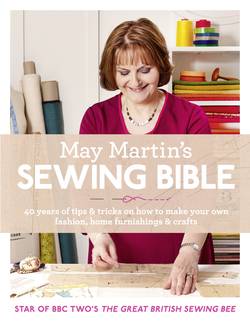Читать книгу May Martin’s Sewing Bible: 40 years of tips and tricks - May Martin - Страница 63
Hand Stitches
ОглавлениеHere I’ve listed all the basic hand stitches that you’ll need for the various projects in this book.
Overstitch or oversewing stitch: This is a small, even diagonal stitch that can be worked from either the right or the wrong side of a garment or other item being sewn together. The stitches will usually show, but give a very secure join.
Overcast stitch: This stitch is used to neaten edges. Take a diagonal stitch over the edge of the fabric.
Running stitch: I often use this as a tacking or temporary stitch. It is secure and several stitches are worked at the same time.
Backstitch: This is a really robust hand stitch that can be used to make permanent seams.
Catch stitch: I have used this to catch the side hems on my curtains. Don’t pull too tight or it will show through on the right side of the fabric.
Slip stitch: This is another stitch that’s used in hemming, for attaching a double fold of fabric to a single layer.
Even slip stitch (ladder stitch): I use this for catching two folds together. When pulled apart, the stitches look like the rungs on a ladder.
Blanket stitch: This can be used as a decorative finish for the edges of seams or appliqué motifs. The thread is looped around the needle each time it is inserted.
Diagonal tacking: This is really useful for holding pleats in position. When underlining a garment piece (i.e. attaching lining to the wrong side of the main fabric to help support it), as I’ve done in the Boned Bodice, diagonal tacks help to hold the layers together.
